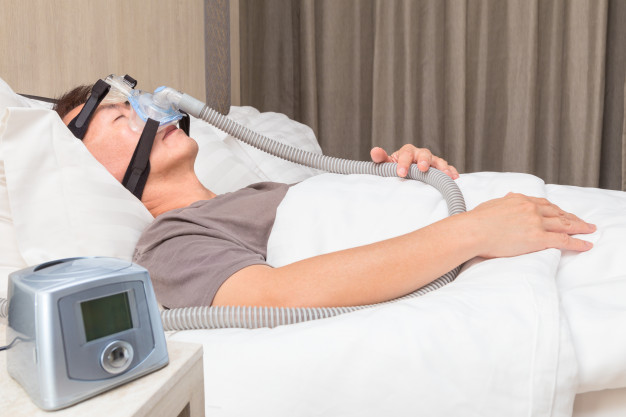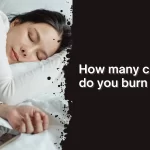Sleep apnea is a sleep disorder where breathing stops and starts repeatedly. If you snore loudly and experience tiredness after sleeping all night, you might be having sleep apnea. One of the treatment options available at Easy CPAP for this condition is continuous positive airway pressure (CPAP). This treatment provides air at a pressure that is high enough to keep the airway from collapsing during sleep. The pressurized air is passed through a mask that covers the nose or mouth area, allowing you to breathe easily and sleep without experiencing interruptions.
Of importance to note is that the CPAP does not breathe on your behalf. Though pressure level needs may differ from one person to the other, you’ll be able to breathe on your own the normal way when using the machine. Often, sleep apnea patients worry about being tied to a noisy gadget, and having tubes, straps and a mask throughout the night. This fear is perfectly normal because the CPAP machine can seem overwhelming at first. However, after using it, you realize it’s not that bad.
Also Read: How Sleep Apnea Can Cause Depression
How the CPAP Machine Works
The CPAP machines that are on the market today are developed based on the principles that guided the development of the first devices developed in 1981 by Dr. Sullivan. The difference between the initial device and the modern one is that the pressure is now generated using quieter, smaller motors.
Even so, room air is drawn through a filter, then pressurized based on the settings that your sleep specialist prescribes. CPAP machines are designed to deliver pressures of between four and 25 centimeters of water pressure (CWP). This air is pushed through a heated humidifier then delivered to the mask interface through a tube.
When the pressurized air flow remains constant, it develops a cushing on the upper airway. This has been referred to as pneumatic air splint which:
- Holds the throat in place – preventing it from collapsing
- Prevents the tongue, the uvula, and the soft palate from moving to the airway
- Lessens the vibration that produces the snoring sound
- Relieves the swelling in the nose and
- Clears the mucus along the airway
- Normalizes breathing
- Improves sleep quality by resolving fragmented sleep
- Maintains oxygen levels – which avert the serious outcomes of sleep apnea.
Automatic CPAP machines are able to detect when an airway collapses through resistance measurements. They are designed to respond by increasing pressure as required to resolve sleep apnea. The machines can also detect lower pressure and respond by adjusting downward where possible.
Understanding the CPAP Machine
Sleep apnea can cause a person to stop breathing for brief moments. People who have this condition can experience these breathing lapses up to 30 times a night or for more than an hour due to blocked or closed airways. The CPAP machine helps push air into the airways when the lapses occur to keep them open.
When you are just starting to use the CPAP machine, you may experience some hurdles – that this does not have to be a deal-breaker. Getting to understand the machine is one of the main steps you need to take to get comfortable using it.
Generally, the CPAP machine comes with a pump that regulates airflow, a mask that covers the nose or the mouth and a tube that takes air from the machine to the patient.
The Mask and Straps:
It will take you time to get used to the CPAP particularly if you have not slept with something over your face before. The process of getting the mask on will also take some time in the first few days.
Generally, the CPAP machine that you get will either have a nasal mask that covers your nose, a full mask that covers both your nose and mouth or a nasal pillow mask that fits well below the nose. Out of these three mask types, you may also come across those whose nose masks have prongs that enter your nose or those that have full face masks that cover your eyes too.
With the varying mask types, it is upon you to pick the one that feels comfortable on your face. Consider trying each mask type then opt for the one that straps well so the mask is held up properly in its place. The most important thing to ensure is that the mask seals properly, in a way that allows air pressure that comes from the tube to remain constant. This way, the CPAP is able to work properly.
Common Problems of Using CPAP
Given the advantages that CPAP offers sleep apnea patients, its side effects are minimals and easy to overcome. Some of the problems that have been linked with the use of CPAP are air swallowing and dry mouth. Most CPAP machines are fitted with humidifiers to address the dry mouth problem. Some are designed to heat moist air to reduce dryness of the mouth.
Due to low pressure, the lungs are not able to blow air out. CPAP machines come with varying pressure settings, depending on whether the patient is exhaling or inhaling. Your doctor can help you determine the pressure level that helps you most and that is comfortable for you.
Even so, the use of CPAP does not in any way make asthma worse. It also reduces a person’s risk of getting a stroke, as opposed to causing one. The treatment is not known to affect inner ears or nasal sinuses. However, there are case reports that suggest the possibility of small pressure amounts being transduced across face tissues. Evidence also suggests that restrictive or overly tight masks can have an impact on midface growth in children. Close monitoring can help prevent this effect.








One Reply to “CPAP Therapy: How CPAP Controls Sleep Apnea”
Comments are closed.